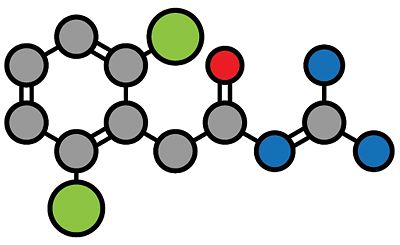Does Guanfacine Improve Functioning in Youth With ADHD?
Abstract
Recent studies have found that guanfacine shows different levels of functional improvement in children compared with adolescents with ADHD.
Guanfacine is an attractive option as an attention-deficit/hyperactivity disorder (ADHD) therapeutic for parents or therapists who are hesitant to prescribe stimulants to children. While many studies have demonstrated that this agent is effective in treating ADHD symptoms, much less is known about how the medication impacts children’s abilities to function in their daily lives.

Guanfacine is an effective nonstimulant medication for ADHD, but more research is needed to assess how symptom improvement correlates with functional improvement.
Some studies have included secondary analyses of functional adaptation, though they typically look only at school and family behaviors. Other studies have not examined ADHD functioning at all, perhaps operating on a reasonable presumption that better symptoms equate with better functioning, noted Mark Stein, Ph.D., a professor of psychiatry and behavioral medicine at Seattle Children’s Hospital.
“But while symptoms and functioning do associate, it’s not a perfect match,” said Stein. “And it’s an important distinction because children with ADHD get referred to physicians, but what gets lost is that they are referred because of their functional problems and not their symptoms.”
Stein was the lead author on a recent study appearing in CNS Drugs that highlights this imperfect correlation between symptoms and function in children receiving guanfacine extended-release (GXR).
This eight-week, randomized clinical trial compared daily functional outcomes in children (aged 6 to 12) taking GXR (1 mg to 4 mg in morning or night) with those who took placebo using the Weiss Functional Impairment Rating Scale-Parent Report (WFIRS-P). WFIRS-P—which has been found to be sensitive in evaluating domains of daily functioning—measures social behavior, risk behavior, life skills, and self-concept in addition to functioning at home or school.
Stein and colleagues found significant reductions in global functional impairment in the children taking GXR, and the degree of the functional improvement correlated fairly well with the degree of symptom improvement.
When looking at the specific domains of functioning, though, a dichotomy emerged. Four areas of behavior—school, family, social, and risk—improved in the GXR group, but life skills and self-concept did not.
“These two skills are fairly complex and take a while to develop in any child, so it makes sense that they would be more resistant to change and not evident after eight weeks of treatment,” Stein told Psychiatric News. He cited a small open-label study carried out a few years back with atomoxetine—another nonstimulant ADHD drug—that identified improvements in life skills and self-concept six months after initiating therapy.
He believes that more long-term studies are warranted to see to what extent these two skills eventually improve and their relationship to other functional outcomes.
The November Journal of the American Academy of Child and Adolescent Psychiatry also featured a clinical study involving GXR, and this one—led by Timothy Wilens, M.D., chief of child and adolescent psychiatry at Massachusetts General Hospital—also found some disconnect between better symptoms and improved functioning.
In this instance, the participants were adolescents aged 13 to 17 who were given either placebo or GXR (1 mg to 7 mg daily) for 13 weeks. The GXR group showed strong clinical improvements in ADHD symptoms compared with the placebo group (as measured by ADHD Rating Scale–IV scores and Clinical Global Impressions–Severity of Illness scores), but there was no statistical difference between the two groups in their WFIRS-P scores.
This lack of behavioral improvement contrasts with a large, multi-national clinical trial published last year. However, this study included children aged 6 to 17 and when considered along with Stein’s new data, suggest that guanfacine’s functional effects might differ depending on age.
More research will be needed to untangle possible age-related effects, though Wilens noted the functional improvements (with the exception of self-concept) were trending in the right direction.
“So it just might be our study size was insufficient to push the meter over the top,” Wilens said. “But it could be other factors; for example, maybe the WFIRS-P scale is more suited to children than adolescents, and investigators need a new approach to measuring teen functioning.”
In the interim, Stein hopes these recent studies encourage clinicians to pay closer attention to functional impairments in their ADHD patients and monitor these impairments as symptoms improve. They can then tailor other interventions such as psychotherapy to the specific functional impairments that may need to be addressed.
Both Stein’s and Wilen’s research studies were funded by Shire Development LLC, manufacturers of GXR (Intuniv). ■



